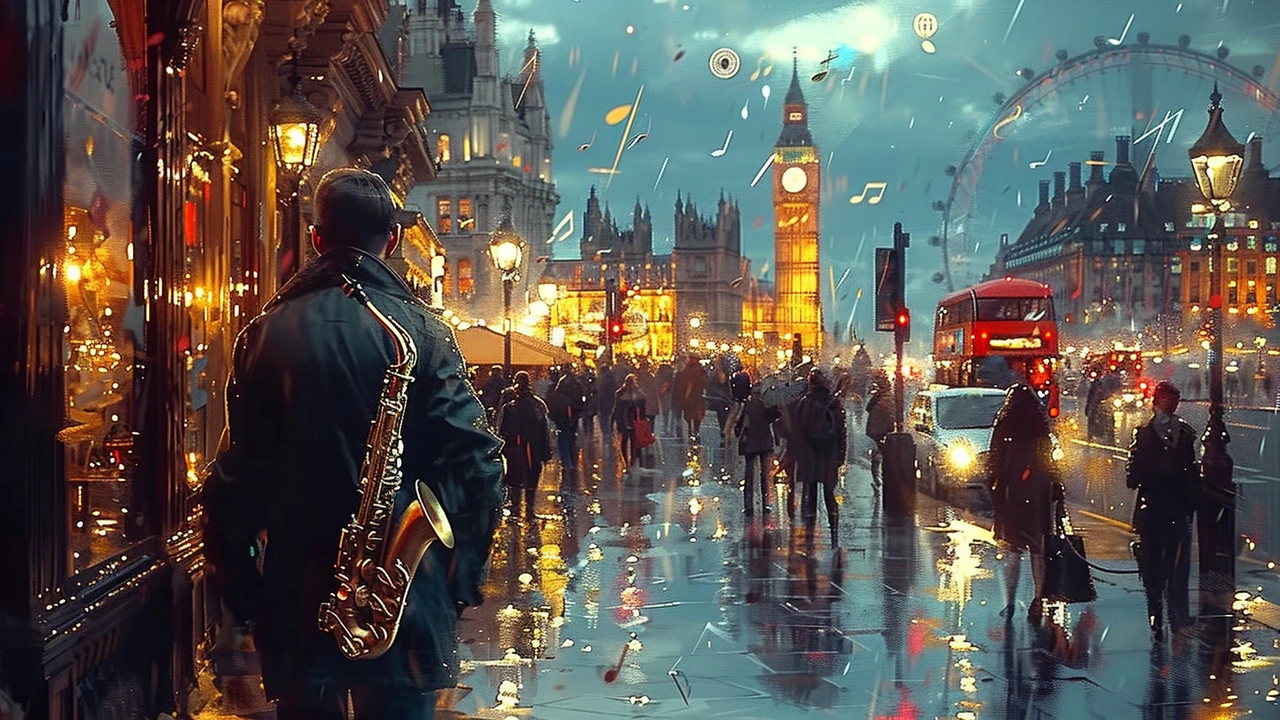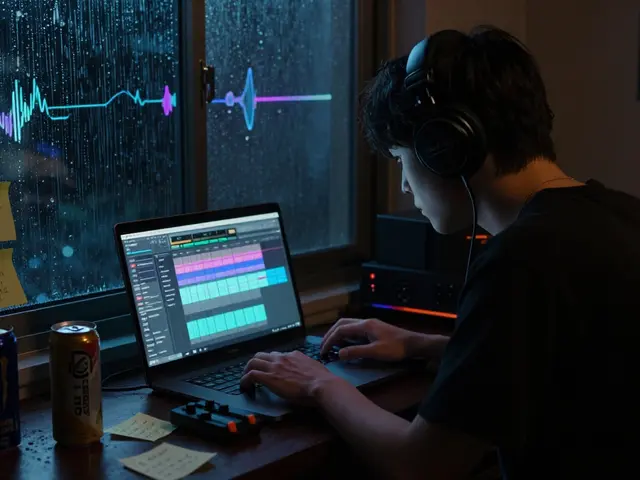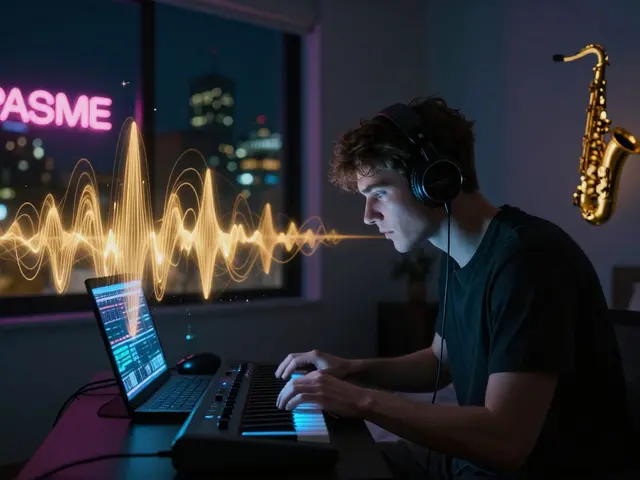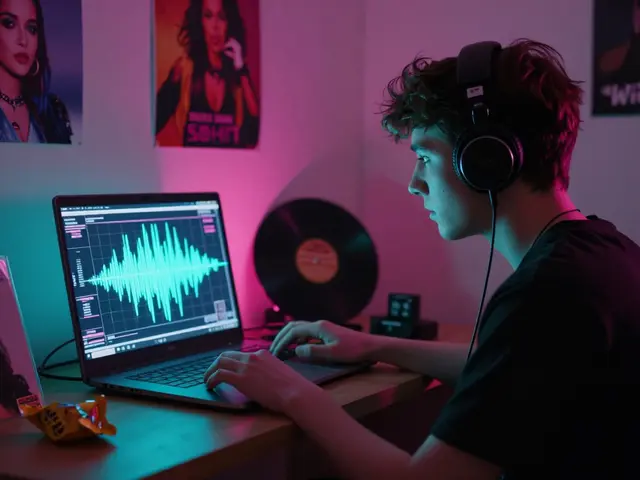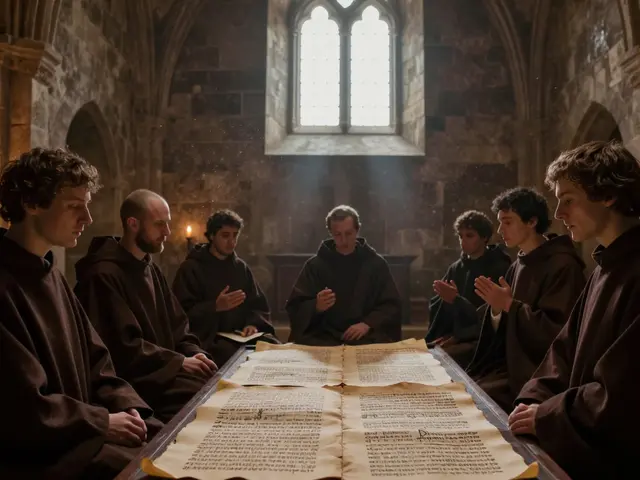Jazz, with its rich history and intricate, soulful melodies, stands as one of music's most versatile genres. It's not only a genre in its own right but a vital ingredient in countless musical hybrids. The fusion of jazz with other musical genres has led to some of the most innovative soundscapes in the music world.
Diving into how jazz mixes with other genres opens up a world of creativity. From the unbridled energy of rock to the rhythmic backbone of hip-hop, jazz's flexibility is unparalleled. The timeless genre also finds harmony with the grace of classical music and the synthesized beats of electronic sounds.
Understanding these musical hybrids isn't just about acknowledging their existence but appreciating the artistry behind them. Whether you're a casual listener or a dedicated musician, the fusion of jazz with other music styles offers endless possibilities for exploration and enjoyment.
- The Roots of Jazz Fusion
- Jazz and Rock Collaboration
- Hip-Hop and Jazz: A Natural Pairing
- Classical and Electronic Jazz Blends
The Roots of Jazz Fusion
Jazz fusion, often simply called fusion, isn’t just a blend of genres; it’s a musical evolution that began in the late 1960s and continued to blossom through the 1970s. At its core, fusion is an inventive mix of jazz improvisation with the sounds and rhythms from rock, funk, and R&B. The genre began to take shape when pioneers like Miles Davis and Herbie Hancock started experimenting with electronic instruments and rock influences. These musicians sought to break away from traditional jazz boundaries and explore new, eclectic soundscapes.
Miles Davis’ album, Bitches Brew, released in 1970, is often hailed as a landmark in the birth of jazz fusion. The album featured electric instruments, including synthesizers and electric pianos, which were groundbreaking for jazz at that time. Davis brought together an ensemble of talented musicians, including guitarist John McLaughlin and keyboardist Joe Zawinul, who would later form their influential bands, Mahavishnu Orchestra and Weather Report, respectively.
“Miles Davis' Bitches Brew is the harbinger of jazz fusion, a revolutionary record that changed the face of jazz and modern music forever.” — Rolling Stone
Herbie Hancock also played a crucial role in popularizing jazz fusion. His album Head Hunters, released in 1973, became one of the best-selling jazz albums of its time. With tracks like “Chameleon,” Hancock fused deep funk grooves with improvisational jazz solos, creating an energetic and modern sound. The record not only attracted jazz enthusiasts but also appealed to a wider audience, crossing over into the mainstream.
Another significant figure in the fusion movement is Chick Corea, a virtuoso keyboardist who founded Return to Forever in the early 1970s. The band's music combined elements of progressive rock, Latin jazz, and funk, making it a colorful example of what fusion could accomplish. Corea’s intricate compositions and the band’s elaborate performances captivated audiences and expanded the horizons of jazz.
During the 1970s, jazz fusion continued to grow in popularity, with bands like Weather Report and the Mahavishnu Orchestra pushing the envelope further. Weather Report, co-founded by Joe Zawinul and Wayne Shorter, was known for its atmospheric soundscapes and cohesive blend of various musical styles. Their hit album Heavy Weather included the iconic track “Birdland,” which became a jazz standard. Meanwhile, John McLaughlin’s Mahavishnu Orchestra was renowned for their virtuosic playing and complex compositions, often drawing comparisons to the best of rock and classical music.
While jazz fusion has evolved over the decades, its roots remain deeply engrained in the pioneering works of these legendary musicians. The genre’s ability to absorb and reinvent elements from other musical styles is a testament to its resilience and endless creativity. Jazz fusion continues to inspire contemporary artists, proving that the spirit of innovation is very much alive in the world of music.
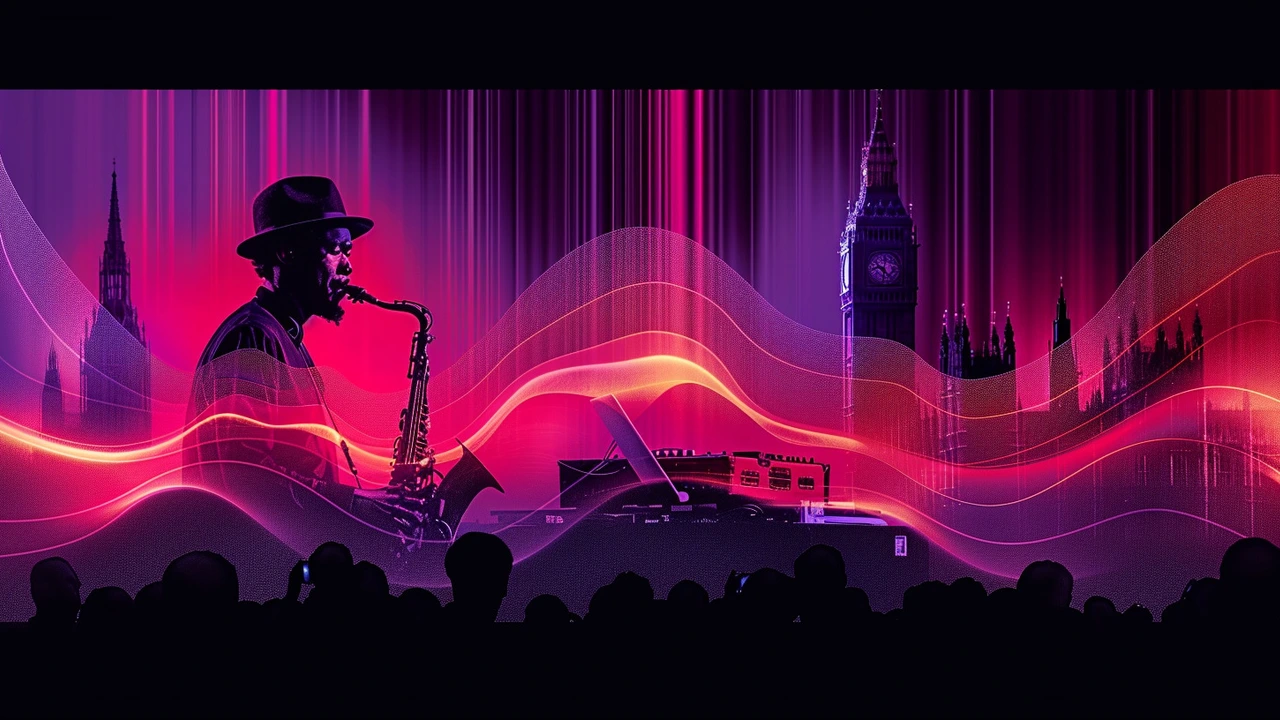
Jazz and Rock Collaboration
The collaboration between jazz and rock music is not just a blend of two genres; it's a fascinating journey through the evolution of sound. This fusion began to gain prominence in the late 1960s and early 1970s. Artists like Miles Davis and Frank Zappa pushed the boundaries of jazz by incorporating the raw energy and electric instruments characteristic of rock. Miles Davis's album Bitches Brew, released in 1970, is often cited as a pivotal moment in this fusion. The album’s use of electric guitars and rock-inspired improvisation was groundbreaking. Not only did it challenge the conventions of jazz, but it also opened jazz to a wider audience who were predominantly rock listeners.
The interaction between jazz and rock allowed musicians to explore and experiment with new sounds. Jazz's improvisational nature paired beautifully with rock's vibrant and bold style. Bands such as Weather Report and Mahavishnu Orchestra emerged, creating complex, energetic music that used the rhythmic and melodic structures of both genres. This integration of different musical elements helped lay the foundation for future fusion genres. From the groovy, rhythmic patterns to the electrifying solos, this collaboration offered listeners a fresh auditory experience.
Prominent rock musicians also dabbled in jazz, leading to interesting cross-genre collaborations. Jimi Hendrix, for instance, worked with jazz organist Larry Young, blending Hendrix's soulful rock guitar with Young's jazz sensibilities. In fact, many consider Hendrix's work as a form of jazz fusion because of his innovative approach to the guitar and his complex, improvisation-heavy compositions. This cross-pollination of styles was instrumental in shaping the soundscapes of modern music genres, providing a rich tapestry of influences that are evident even today.
"Jazz is restless. It won’t stay put and it never will." - J.J. Johnson
These collaborations also influenced the production techniques and recording styles of the time. Albums like Steely Dan’s Aja exemplify this merging of rock and jazz. The meticulous production, complex chord changes, and jazz-inflected solos are testament to the seamless blend of both genres. This album is a hallmark of jazz-rock fusion, often lauded for its technical prowess and creative fusion of styles. The spirit of experimentation and boundary-pushing that characterized the jazz and rock collaboration continues to inspire modern musicians across various genres.
For anyone keen on exploring this fascinating fusion, diving into the discographies of these pioneering artists is a great start. Pay attention to the distinct elements that each genre brings to the table and how they are woven together to create a cohesive and innovative sound. Jazz-rock fusion not only enriches the musical tapestry but invites listeners and musicians alike to embrace creativity without constraints.
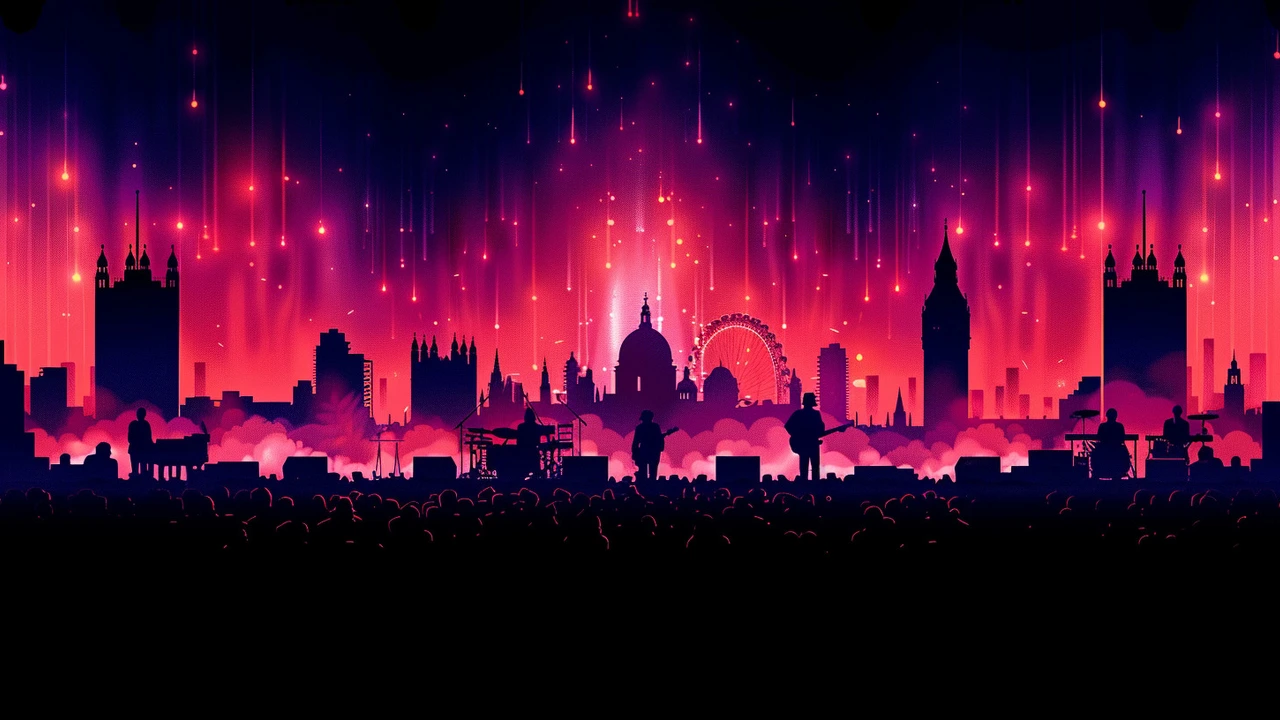
Hip-Hop and Jazz: A Natural Pairing
When examining the evolution of music, the partnership between hip-hop and jazz feels almost predestined. Both genres are founded on innovation, expression, and the power of storytelling. Hip-hop, with its roots in African American culture, has often borrowed elements from jazz, giving birth to a unique, rhythm-filled relationship that has evolved over decades.
In the late '80s and early '90s, the beat tapes of artists like A Tribe Called Quest and Gang Starr started to incorporate jazz samples. This blend was not merely about adding intricate sounds but also about connecting with the past to create something timeless. Jazz's contribution to hip-hop can be recognized in the sampling of legends like Miles Davis and John Coltrane. These samples often form the backbone of a hip-hop track, grounding its beats in a deep, soulful history.
One notable figure in this symbiotic relationship is the producer DJ Premier. Collaborating with artists from Nas to The Notorious B.I.G., he utilized jazz's harmonic richness to create tracks that are both timeless and innovative. This influence was further reflected in the 1994 album 'Illmatic' by Nas, widely celebrated for its genius use of jazz samples.
Jazz influences within hip-hop also shine through in live performances. Artists like Kendrick Lamar have incorporated live jazz elements into their shows, inviting musicians to perform alongside them on stage. This live dynamic brings a raw, captivating energy, bridging the gap between the genres in real-time.
Additionally, contemporary acts such as The Roots, led by Questlove and Black Thought, have melded the improvisational nature of jazz with the lyrical prowess of hip-hop. By doing so, they offer audiences an avenue to appreciate both genres simultaneously while introducing new listeners to the tenets of jazz.
Beyond just musical composition, the lyrical content of jazz and hip-hop often intersects. Jazz's tradition of using music to comment on social and political issues is mirrored in hip-hop's narrative style. Both genres find power in storytelling, detailing themes of struggle, triumph, and identity.
"Rap is hip-hop's jazz," said Herbie Hancock, illustrating the fundamental connection between these worlds. "It has the improvisation, the innovation, the storytelling. Hip-hop is the little cousin who grew up learning from jazz's footsteps."This synergy, highlighted by Hancock, shows how both genres inform and elevate each other, offering an enriched experience.
The cross-pollination of jazz and hip-hop continues to grow. Emerging artists are exploring new horizons, blending these genres in novel ways. As technology and musical tastes evolve, the collaboration between jazz and hip-hop promises to deliver fresh, evocative sounds for years to come. Whether it's through sampled beats, live instrumentation, or lyrical storytelling, the marriage of these genres evokes a profound sense of history and creativity.
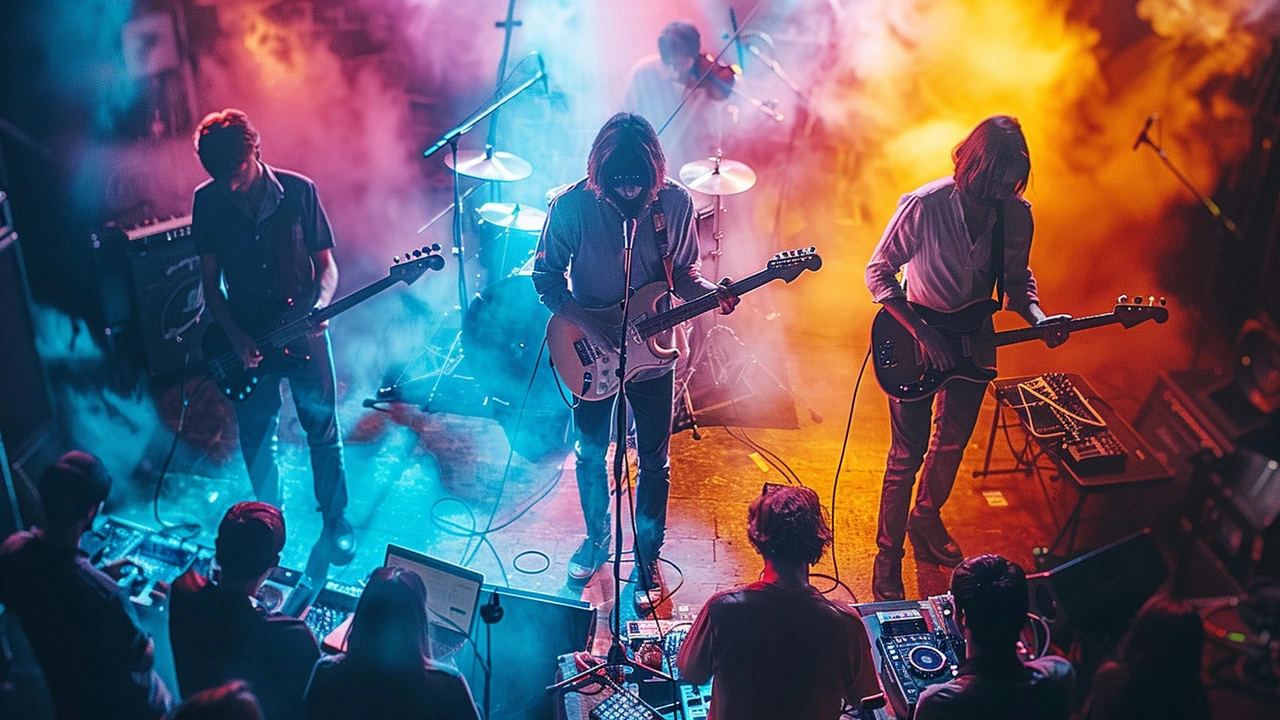
Classical and Electronic Jazz Blends
The fusion of jazz with classical and electronic music has created some of the most intriguing sounds in recent musical history. Jazz’s ability to adapt and integrate with diverse styles allows it to be versatile and innovative. When classical and electronic elements are combined with jazz, the result is often a rich and layered musical experience that appeals to a wide range of listeners.
Jazz and classical music might seem like unlikely partners at first. Classical music’s structured compositions and traditional forms contrast sharply with jazz’s improvisational nature. However, the two genres share a common ground in their complexity and need for skilled musicianship. One famous example of this blend is George Gershwin's “Rhapsody in Blue.” This piece, written in 1924, masterfully brings together the structure of classical music with the improvisational freedom of jazz, creating a timeless piece that resonates with audiences nearly a century later.
More recently, artists like Wynton Marsalis have pushed these boundaries further. Marsalis, a renowned trumpeter and composer, has worked extensively in both jazz and classical realms. His ability to traverse these genres underscores the compatibility of jazz and classical music. His compositions not only celebrate the freedom of jazz but also pay homage to the rigorous demands of classical technique.
“Jazz music is a reflection of hope, struggle, and quest, all framed within an American artistic expression. Its collaboration with classical and electronic elements expands its emotional and musical reach.” - Wynton Marsalis
The rise of electronic music in the late 20th century brought another exciting dimension to jazz. Electronic jazz, often called jazztronica, combines traditional jazz instruments and structures with electronic sounds and production techniques. Artists like Herbie Hancock were pioneers in this movement. Hancock’s work in the 1970s and 1980s, particularly with his album “Future Shock,” showcased his innovative approach to blending electronic synths and beats with jazz rhythms and melodies.
The influence of electronic music has only grown in recent years, with artists such as Flying Lotus and Bonobo leading the charge. These musicians employ a mix of sampling, live instrumentation, and digital production to create deeply textured soundscapes. Their work demonstrates the endless possibilities that arise when jazz intersects with electronic music. This genre-blending results in music that appeals to both jazz purists and fans of electronic music.
The Impact on Contemporary Music
Combining classical and electronic elements with jazz has not only expanded the boundaries of the genre but has also influenced contemporary music at large. Many modern composers and producers draw inspiration from these hybrid sounds. By bridging gaps between genres, they create unique compositions that stand out in today’s diverse music landscape.
For anyone looking to explore these musical intersections, it’s worth diving into works like Claude Bolling’s “Suite for Flute and Jazz Piano Trio,” which blends baroque classical elements with jazz, or Nujabes’ “Spiritual State,” where jazz harmonies meet electronic beats in a seamless fusion. These works provide a gateway to understanding how jazz’s adaptability keeps it relevant and exciting.
Ultimately, the fusion of jazz with classical and electronic genres reflects a broader trend in music: the breaking down of traditional genre barriers. Musicians today are unafraid to experiment, creating vibrant, hybrid sounds that push the envelope. Whether through the structured elegance of classical fusion or the innovative possibilities of electronic jazz, these blends continue to shape the future of music.

